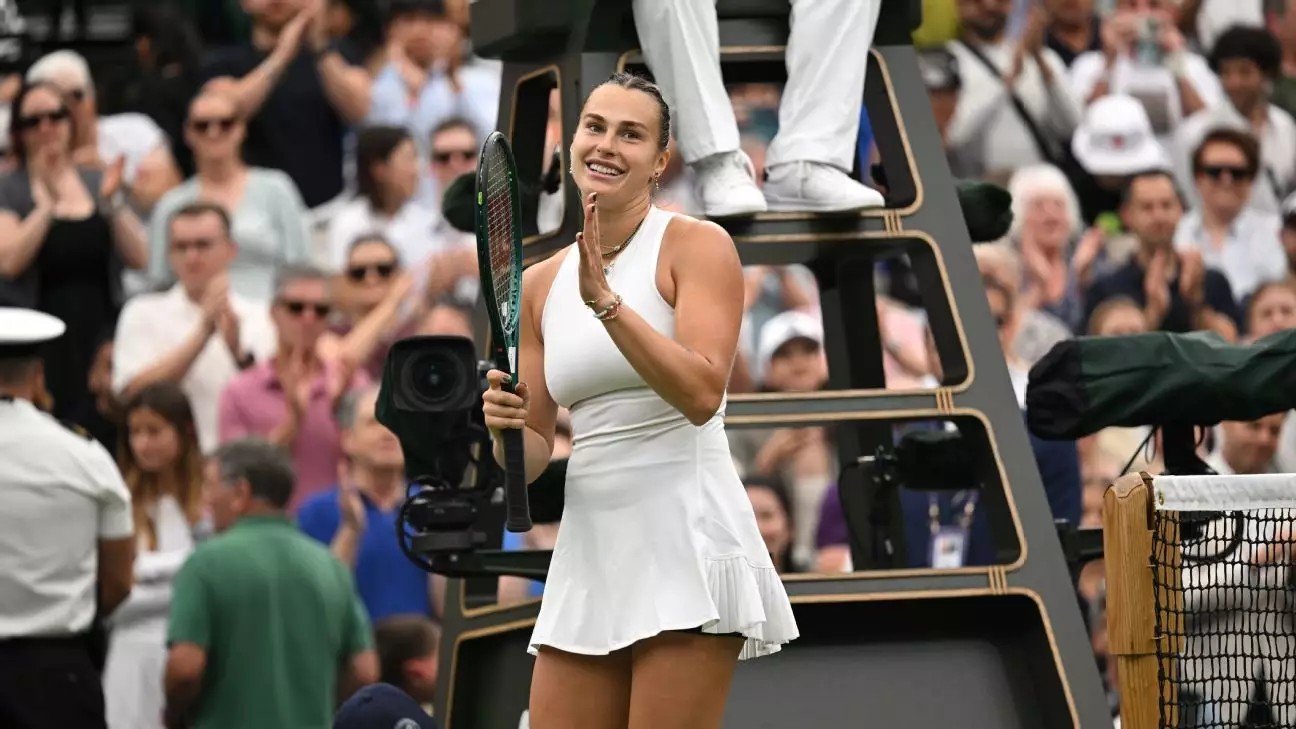Aryna Sabalenka’s recent triumph at Wimbledon is more than just a victory; it is a testament to her relentless pursuit of excellence and her unwavering mental strength. Her 6-4, 7-6 victory over Elise Mertens was a hard-fought battle that showcased her ability to thrive under pressure. Sabalenka’s journey to the quarterfinals of her 11th consecutive Grand Slam underscores a rare level of consistency and resilience that few athletes can emulate. In an era where fluctuating performance can define careers, her streak stands out as a beacon of perseverance. Sabalenka’s capacity to overcome the psychological and physical toll of high-stakes matches highlights a maturity that will serve her well in future endeavors.
Her dominance in tiebreaks this season, with an impressive 16-1 record, signals her exceptional mental fortitude. It’s not merely her aggressive playing style that sets her apart but her ability to remain calm and composed when it matters most. This performance shatters the misconception that power alone guarantees success; it emphasizes the importance of mental agility and strategic resilience. Sabalenka’s resilience underscores a vital truth in tennis: the difference between good and great often lies in endurance and an unyielding belief in oneself.
Challenging Norms and Embracing Growth
Sabalenka’s journey is also illustrative of the importance of evolving as an athlete. Her path to this point has not been without setbacks—injuries, inconsistent results, and the pressure to break free from her reputation as a powerful but sometimes unpredictable player. Her ability to adapt and turn these challenges into stepping stones is inspiring. Her statement about playing against close friends like Mertens isn’t just about competitive edge; it reveals the emotional complexity athletes face when their personal and professional lives intersect on the court.
What stands out about Sabalenka is her conscious effort to improve mentally and technically. Her acknowledgment of the difficulty in facing teammates emphasizes her understanding that tennis isn’t just a game—it’s a test of character. Her growth is evident in her recent performances: she’s not just relying on raw power, but also deploying tactical intelligence, patience, and emotional control. These qualities are what separate fleeting talent from sustained excellence over multiple majors—not a fluke, but a narrative of continuous self-betterment.
Implications for Future Titles and Legacy
Sabalenka’s current trajectory suggests her potential to cement her legacy as one of the leading figures in women’s tennis. Her steady appearances in Grand Slam quarterfinals, a feat matched by only a handful like Serena Williams during her prime, place her on a path toward breaking historical records and establishing her dominance. Her upcoming match against Laura Siegemund presents another opportunity for her to showcase her versatility and resilience on grass, a surface that demands finesse and agility.
Siegemund’s journey as the oldest woman to reach her first Wimbledon quarterfinal embodies the ethos of perseverance, matching Sabalenka’s narrative of fighting against the odds. Sergio Tandi’s acknowledgment of Siegemund’s risk-free approach indicates a strategic mindset that could complicate Sabalenka’s plans. Yet, Sabalenka’s confidence and experience—coupled with her mental toughness—are qualities that can turn such challenges into opportunities. Her ability to stay focused on her goals, regardless of the context, will play a pivotal role in her pursuit of a maiden Wimbledon title.
Her rising prominence is also amplified by her connection with the crowd. Sabalenka’s acknowledgement of their support demonstrates her understanding that tennis is as much about connection as it is about competition. Her authenticity, combined with her relentless pursuit of improvement, resonates with fans and critics alike. If she continues on this trajectory, her name may soon be synonymous with resilience, power, and strategic mastery—a true icon of modern tennis ready to leave an indelible mark on the sport’s history.


Leave a Reply